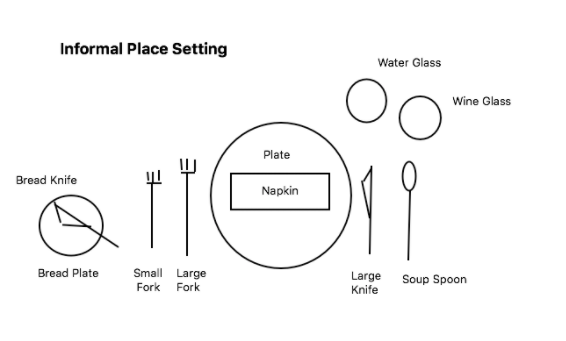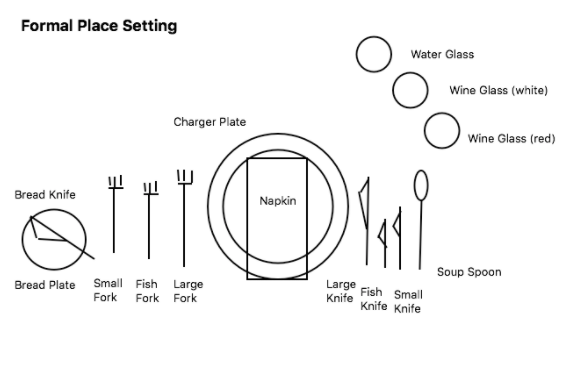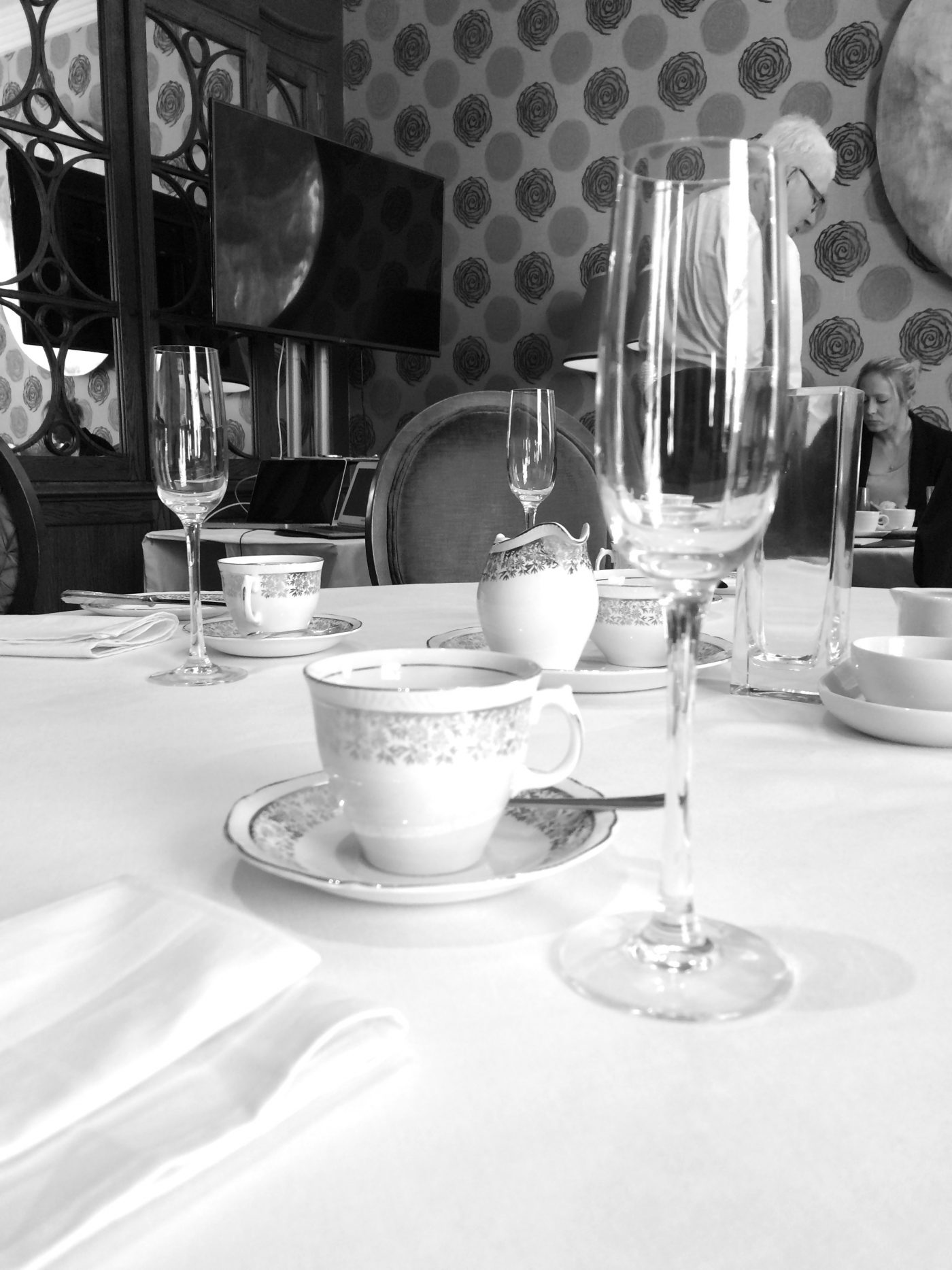One of the most important aspects of table management is ensuring the settings are laid correctly. As a server, the layout you’ll need to use will change depending on the type of silver service you’re using. But how do you know whether you’ll need to use formal or informal table settings for different occasions? Read on to discover the details about these two very different settings.
Informal Table Settings

For informal table settings, fewer utensils and serving dishes will appear on the table. As a general rule, informal table settings will be dictated by the principal or manager. And will be adjusted depending on the type of meal being served. Informal table settings will often be used in high street restaurants and private settings within the household.
Common examples of informal table settings could be:
- Napkins can be folded and placed in a wine glass, or used in napkin rings.
- Singular knife and bread plate are placed to the left of the small fork.
- Distance is increased and less accurate. And the cup and saucer tend to sit around 30 cm from the edge of the table.
- Pudding fork and spoon can be set above the plate in restaurants. Otherwise it should always be to the side on the place setting. If there’s not enough room it should be placed after the main course has been served. The fork should point right and spoon point left.
Items Used in Informal Table Settings
Do you know which items are used in formal and informal table settings? #question #silverservice Share on XDinner Plate
The first item to be set on the table. The napkin can then be placed on top.
Two Forks
Forks are always placed to the left of the plate. The larger fork is used for the main course and called the large fork. And the smaller fork is used for the first course or salad. Like in a formal dinner you work from the outside in.
Napkin
The napkin can be folded or placed in a napkin ring. Ad placed either to the left of the forks or on the centre of the dinner plate. It can also be folded and put into a glass. Sometimes a folded napkin can be placed under forks.
Large Knife
It is always placed immediately to the right of the plate, with the sharp edge facing inwards. Depending on the meal this can be replaced with a steak knife if required. Informal meals will most likely mean that the dinner knife is used for all the courses. But as a rule, a dirty knife should never be placed on the table, placemat or tablecloth.
Spoons
These go to the right side of the knife. In the picture above, soup is being served first, so the soup spoon is placed on the outside right of the dinner knife. The pudding spoon or teaspoon which is used at the end of the meal. Will go to the left inside of the soup spoon. Next to the dinner knife.
Glasses
All glasses are always placed at the top right of the dinner plate above the knives and spoons.
Formal Table Settings

Accuracy and precision become paramount in setting the table for formal table settings. It is based on the informal setting, but expanded and developed. Formal table settings are used for multiple courses. Both in private homes and restaurants.
The final layout and look must be perfect and the highest details must be observed. From the white linen (which is considered classical on table dressing) through to the napkins, polished silver and decorations, every aspect of formal table settings is important. Table cloths must be crease free and hung evenly on each side of the table, with average drops around 12-18 inches as you want it low enough to cover the table, but not so low it ends up in the guest’s laps.
Items Used in Formal Table Settings
Service Plate
This is a large plate which is often placed on the table prior to the arrival of the dinner. And this is also called a charger. It acts as an under-plate for the plate holding the first course. Which will be brought to the table. This service plate will remain in place for the future courses until the main course is served. At this point, the two plates are interchanged.
Butter Plate
The small butter plate is placed on the left of the place setting next to the small fork.
Large Fork
This is the largest of the forks and is placed on the left side of the plate. Smaller forks for other courses are then placed next to this. According to when they will be used.
Fish Fork
If there is a fish course, the small fork is placed to the left of the dinner fork, as we always work from outside-in.
Small Fork
If the salad is served after the main course then the small salad fork is placed to the right of the dinner fork, next to the plate. If the salad is served prior to the entree and the fish second, then the forks would be arranged with the salad fork, fish fork and then the dinner fork.
Large Knife
Again the largest dinner knife is placed to the right of the dinner plate
Fish Knife
This is a special shaped knife. This is placed to the right of the dinner knife.
Small knife
If this is used then it would be placed to the left of the dinner knife next to the dinner plate. If the salad is to be served first and the fish second, then the knives would be arranged dinner knife, fish knife and then salad knife.
Soup spoon
If soup is served as a first course, then this spoon is placed to the right of the knives.
Oyster Fork
If shellfish is served then the oyster fork goes to the right of the spoons. This is the only fork ever to be placed on the right of the plate.
Butter Knife
The small knife is placed diagonally on the top of the butter place, handle on the right and sharp edge facing down.
Glasses
These are placed on the right above the knives and spoon. These can be up to five glasses and again are always placed in the order of use. If there are more than three glasses they can be placed from the smaller at the front to larger at the rear. The water glass is placed directly above the knives, and to the right are the white and then the red glasses. Each time a glass has been used for a particular course they are removed. If new wine is served with each course. The glass should be replaced.
Napkin
The napkin is placed on top of the service plate. It can also be placed on the left of the forks, or under the forks if the space is tight.
Would you like to know more about formal or informal table settings? Why not consider joining one of our silver service training courses, and perfect your own service skills? Don’t hesitate to contact us if you’d like any advice or information!

